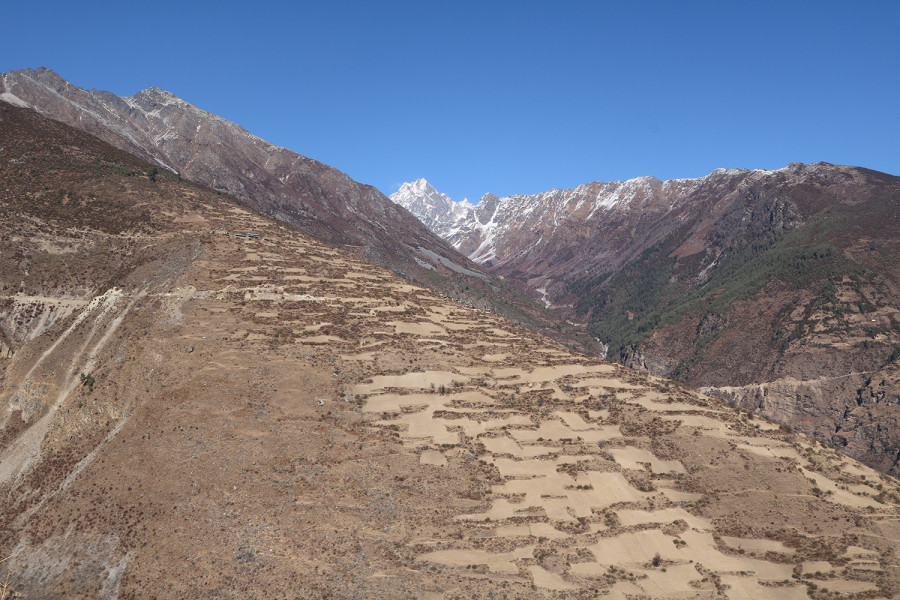Editorial
Mountain blues
The government must invest in climate change research.
What do shrubs, grasses and mosses, cauliflowers and pumpkins, flies and mosquitoes, doves and house crows, Bengal tigers, clouded and common leopards, pikas and snow leopards, and diseases like malaria and dengue have in common? These plant, insect and animal species, together with infectious diseases, to name a few, have been increasingly documented at higher altitudes in Nepal as temperatures rise and weather patterns change erratically. At a time when the melting of glaciers, unusual drought or rainfall pose persistent risks, the movement of both non-native and native species into higher ecosystems has baffled the scientific community and locals while raising significant questions regarding our environment and conservation.
In the remote mountain district of Mustang, villagers no longer descend to lower elevations to escape the harsh winter, but it’s not just winters that have become considerably warmer in the last decade. Rain and snowfall patterns in the region are increasingly unpredictable, and they have triggered disastrous flash floods. At the same time, temperatures are rising during the summer, bringing with it a new set of problems—mosquito-borne diseases. The increase in malaria and dengue cases at higher elevations was never heard of, while mosquitoes had never been sighted. As many as 13 out of the 16 mountain districts have reported close to 10,000 malaria cases, according to a 2016 report; and experts fear dire consequences given the rate at which the climate continues to warm.
Disease-carrying mosquitoes or flies are not the only risks. Recent research has also shown that plants live in higher ecological zones of the Himalaya than they did 25 years ago in the highest region of the planet. Scientists who assessed satellite data from 1993 to 2018 say there has been a significant growth of subnival vegetation, which includes small and dwarf plants like grasses, shrubs and mosses. Even plants like rhododendron are moving up because of favourable temperatures.
Depending on hotter or cooler conditions, researchers say, the species are moving northward in response to climate change, and the distribution change has been faster than previously estimated. Researchers have discovered that birds, mammals, reptiles, insects, spiders, other invertebrates and plants are moving to higher elevations. A new scientific review by a global team of researchers says this complex phenomenon needs more research to give us a complete picture of how climate change impacts various species and also to guide evidence-based conservation. The data, scientists say, is urgently needed to find out which species are most vulnerable to climate-driven extinction, and understand how plants interact with soil and snow under warming and drying climate conditions.
Nepal is home to several endemic species, some of which are highly vulnerable to climate change, change in land use or invasion of non-native species. The repercussions of these pronounced changes at higher elevations, exacerbated by climate change, inadvertently affect the lives of the mountain communities and the endangered flora and fauna species. Multiple studies over the years have warned that mountain ecosystems are highly vulnerable to climate-induced shifts, and we do not know for sure what the repercussions will be. There is a lack of study and funding to assess what these changes mean. We need accurate data to make informed decisions as climate and migration trends continue, for which the government must prioritise investment in climate change research.




 12.99°C Kathmandu
12.99°C Kathmandu












%20(1).jpg&w=300&height=200)

